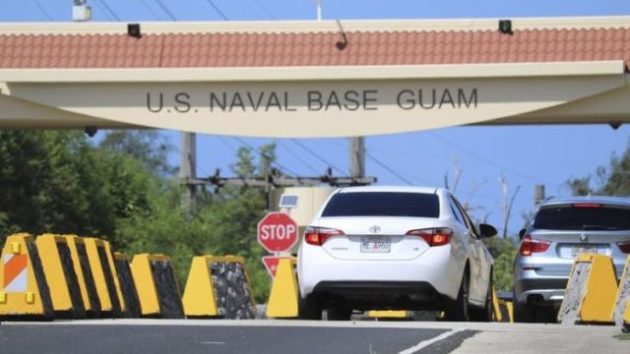A North Korean attack on Guam is a direct attack on the United States of America
Hat tip to Lisa Benson. USAF Lt. Col. (Ret.) Rick Francona, a frequent guest analyst on national security matters related to the continuing crisis published his assessment of the South Korean translation of the North Korean Strategic Military command regarding the threat to Guam of a possible missile strike on Tuesday, August 15th if ordered by hereditary leader of the DPRK Kim Jong-un. Notwithstanding, the heightened tensions and rhetorical bombast between Pyongyang and the Trump summer White House in Bedminster, New Jersey there may be some wiggle room. Francona interprets the South Korean translation as being the equivalent of what US military planners do, comes up with possible scenarios for military action, in this case the launching of four North Korean IRBMs aimed at splashing down offshore of Guam as a demonstration of force.
Notwithstanding, the US and allies, notably Japan and South Korea have to undertake defensive measures against the likelihood, however remote that Kim might order the missile strike. That means keeping B-1 Lancer bombers and high altitude drones equipped with missiles to strike at mobile launching sites, once radar and telemetry that a 30 minute launch appears imminent. As a further precaution, the Defense Department and US Navy might deploy floating x-band radar and Missile destroyers and cruisers with both Aegis and Standard Missile systems complementing the THAAD system at Guam primarily contending with Medium Range Ballistic missiles.
Here is Lt. Col. (ret.) Francona’s Linked-In Pulse assessment of the North Korean strategic military command threat message.
This is a South Korean government translation of a statement attributed to the commander of the [North] Korean People’s Army Strategic Force, the unit responsible for operation of the country’s ballistic missiles.
Most media outlets are reporting this statement as a threat to the U.S. territory of Guam. However, a careful reading of the document – which is somewhat vague due to the difficulties in making a precise interpretation of the rhetoric – tends to lessen the “threat” nature of the statement and provides some insight as to the inner workings of the Kim Jong-un regime.
First, the statement originates with the commander of the country’s missile forces, and not attributed to Kim Jong-un himself. The statement appears to be carefully crafted to deliver what might be construed as a threat, yet vague enough to allow deniability.
For example, the statement reads that the missile force is “seriously examining the plan” for an attack on Guam, not that they intend on executing the plan. While to many this may seem to be mere semantics, it is important to remember that military forces, including our own, develop and exercise plans for numerous contingencies, many of which will never be used.
Interestingly, the statement provided precise details of the plan: four Hwasong-12 intermediate-range ballistic missiles* will be launched, fly over three Japanese prefectures (including Hiroshima) for 1,065 seconds (17 minutes, 45 seconds) on a course for 3,356.7 kilometers (2085.75 miles) to a target area located 30 to 40 kilometers (18 to 25 miles) from the island.
I would make the point that this plan requires the Hwasong-12 to function properly. The North Koreans have only launched this missile variant four times – three ended in failure. If the North Koreans plan to launch this missile on a flight path over Japan and aim at a point mere miles from an American territory and a U.S. Air Force base, perhaps they might want to work on the reliability of the weapon – an error might just cause an incident with far greater ramifications than a “crucial warning to the U.S.”
Probably the most important message in the statement is the penultimate sentence, paraphrased: “The KPA Strategic Force will complete the plan by mid-August and provide it to the commander in chief and wait for his order.” I believe that the phrase “commander in chief of the DPRK nuclear force” is a reference to Kim Jong-un since the commander of the KPA Strategic Force answers directly to the leader.
Bottom line: this statement indicates a planning process in North Korea analogous to the planning process in the U.S. Department of Defense whereby military options are provided to the President. Developing a plan, developing an option for the commander in chief in reality is just that.
This “plan” is not specific threat to Guam – yet.
* The statement uses the term rockets, when the Hwasong-12 is clearly a missile. As with many languages, Korean may not distinguish between rocket and missile.

The North Korean “threat” to Guam
This is a South Korean government translation of a statement attributed to the commander of the [North] Korean People’s Army Strategic Force, the unit.
LINKEDIN.COM
RELATED ARTICLES:
Susan Rice Urges Donald Trump to ‘Tolerate Nuclear Weapons in North Korea’
President: Maybe Warning to North Korea ‘Wasn’t Tough Enough’
Trump: This is Not a Dare, The U.S. Will Respond If North Korea Goes After Guam



Leave a Reply
Want to join the discussion?Feel free to contribute!